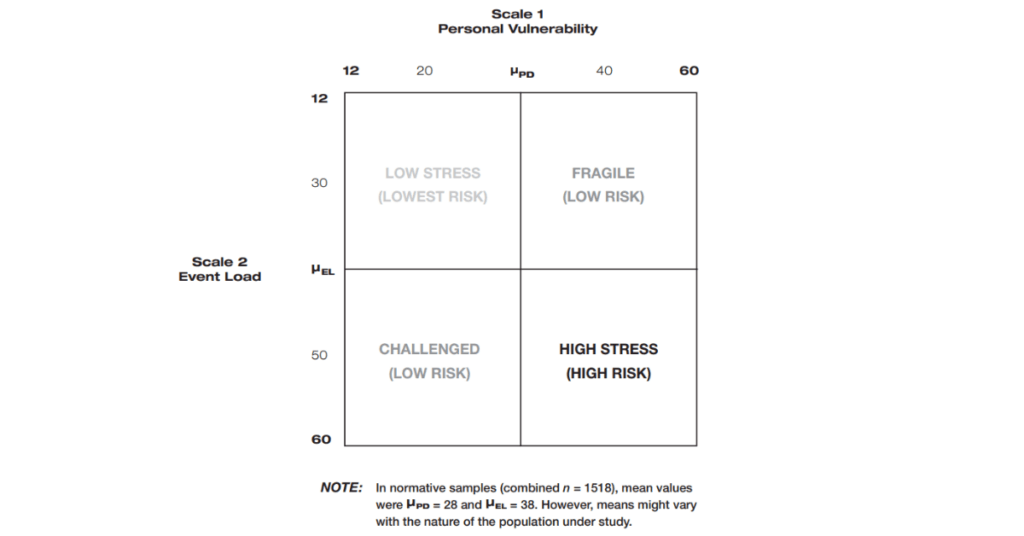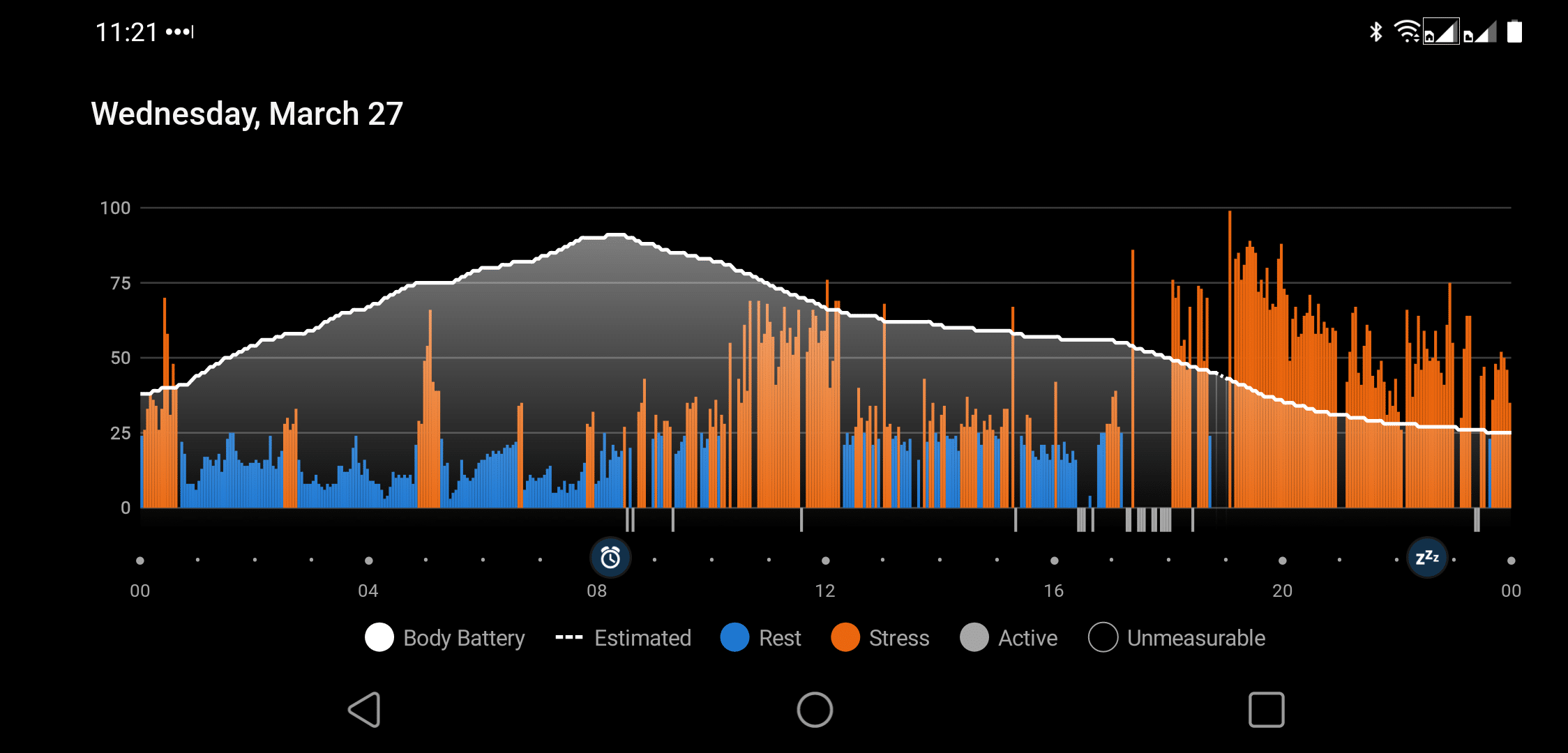Stress has become increasingly prevalent today, highlighting the critical need for tools to assess stress levels accurately. The Stress Overload Scale offers a valuable solution designed to precisely measure and identify symptoms of excessive stress, providing a clear pathway to understanding and addressing stress overload.
What Is the Stress Overload Scale?
The Stress Overload Scale is a questionnaire designed to help individuals assess their stress levels. It quantifies stress overload symptoms, helping to identify when stress is reaching harmful levels and necessitating measures for stress management or intervention.
This blog is part of a series on “stress assessments.”
Key Insights on Utilizing the Stress Overload Scale
- Understanding the importance of early detection of stress symptoms to prevent escalation.
- Utilizing the Stress Overload Scale as a quantitative measure provides a clear perspective on your stress levels.
- The scale is a navigational tool for identifying effective stress management strategies tailored to your needs.
- Combining the results of the scale with personal introspection enhances understanding of stress triggers and coping mechanisms.
- Exploring varied stress reduction techniques recommended based on your scale results can offer comprehensive relief.
- Consider professional consultation when stress overload scale results indicate a high stress level.
Understanding Stress Overload
Did you know that your body has an alarm system for stress? When it’s constantly ringing, that’s stress overload. This state goes beyond everyday stress, morphing into a relentless tyrant that affects both mind and body. It’s when the scale tips from managing a busy day with grace to feeling like a juggler with one too many balls in the air. Stress overload can make every day feel like a mountain to climb without a summit.

But what exactly flips the switch to ‘overload’? It’s a mix, from work pressures and family duties to the never-ending stream of news notifications. It’s important to recognize the signs early. Feeling irritable? Sleeping poorly? These could be your mind and body waving red flags. Addressing these symptoms early can prevent a full-blown stress avalanche.
The Science Behind the Stress Overload Scale
Enter the stress overload scale, a tool born from the luminous halls of scientific research. Spearheaded by the National Institutes of Health (NIH) and validated through rigorous tests, this scale isn’t just another questionnaire. It’s a beacon for those navigating the stormy seas of stress, offering a quantifiable measure of stress levels.
What is the scale’s objective? To put a number to the subjective. Whether ticking off questions in a cozy armchair or clicking through an online survey, users confront statements that mirror common stress symptoms. Each response gets tallied up, translating feelings into figures. But remember, while it’s rooted in science, it’s merely a compass, not a destination. The real journey is what you do with the information it provides.
Interpreting Your Stress Overload Scale Results
So, you’ve taken the SOS. What do the results mean? For CATEGORICAL SCORING: Use your PV and EL totals to locate the appropriate diagnostic quadrant for the respondent on the grid below.
NOTE: In normative samples (combined n = 1518), mean values as indicated in the picture above were µPD = 28 and µEL = 38. However, means might vary with the nature of the population under study. Those scoring in the High EL-High PV category are at the greatest risk for subsequent complications.

For CONTINUOUS SCORING: Add the PV and EL totals. Higher scores (over 66) indicate higher levels of stress overload.
Whether you adopt stress-busting techniques or seek professional advice, your score is the starting line, not the end. Think of it as your personalized stress GPS, offering routes but never dictating the journey. It’s an invitation to explore stress management avenues, from the whispered wisdom of meditation to the liberating rush of physical activity.
Stress Management Techniques Post-Assessment
A high score on the stress overload scale is like having a blinking neon sign in your life, signaling it’s time for action. Start with the basics: breathe. Not just the autopilot kind but deep, soul-filling breaths. It’s free, easy, and surprisingly effective.
Next, draft your stress management blueprint. This might include setting boundaries, like turning off work emails after hours or introducing joy-boosting activities into your day. If the scale pointed out glaring stress signals, consider professional guidance.
| Technique | Effectiveness | Ease of Implementation | Cost |
|---|---|---|---|
| Deep Breathing Exercises | High | Easy | Free |
| Meditation | High | Moderate | Free to Low |
| Physical Activity | High | Varied | Free to High |
| Professional Counseling | High | Varied | Medium to High |
| Setting Boundaries (Work/Life Balance) | Moderate | Moderate | Free |
Personal Thoughts
In my experience, the Stress Overload Scale became a valuable tool, offering a clear metric for understanding and managing my stress levels. It’s not a magical solution but a starting point for making meaningful changes in how I approach stress.
Utilizing this scale, I learned to recognize when my stress levels were escalating and take proactive steps to address them. This practical approach complements the scientific and holistic methods I share on my website, which aims to offer others a pathway to better stress management.
Don’t want to take the test online? Then get the downloadable version.
Take the Stress Overload Scale Test here:
INSTRUCTIONS: In the following section, you will find 30 questions about your feelings during the past week. Please answer every question, even though some might sound similar. Each question names a particular feeling common to people throughout their everyday lives.
Please check the one box that shows how much you have felt that particular feeling in the last week. For example, you might check the last box if you had the feeling a lot. Or you might check the second box if you felt that way slightly. Or you could check off any of the other boxes.
Please leave your email below to receive the results in your inbox, along with my free eBook Beyond Deep Breaths, which contains ten lesser-known but very effective stress-coping skills to get you started.
IN THE PAST WEEK, have you felt:
Frequently Asked Questions
How Does the Stress Overload Scale Measure Stress?
The Stress Overload Scale utilizes a series of questions that reflect common symptoms and signs of excessive stress. It asks individuals to rate their experiences. Responses are then scored to measure stress levels quantitatively, offering insights into whether one is experiencing stress overload.
What is the Difference Between the Stress Overload Scale and PSS10?
While the Stress Overload Scale focuses specifically on identifying symptoms indicative of stress overload, the PSS10 (Perceived Stress Scale) measures the degree to which situations in one’s life are appraised as stressful. Both scales measure stress but approach it from slightly different perspectives.
Is the Stress Overload Scale Adaptable for Different Age Groups?
While the Stress Overload Scale is generally designed for adults, certain versions or adaptations have been developed for different age groups, including adolescents. However, the adaptation process involves careful consideration to ensure that the questions are appropriate and understandable for the target age group and accurately measure stress overload.





